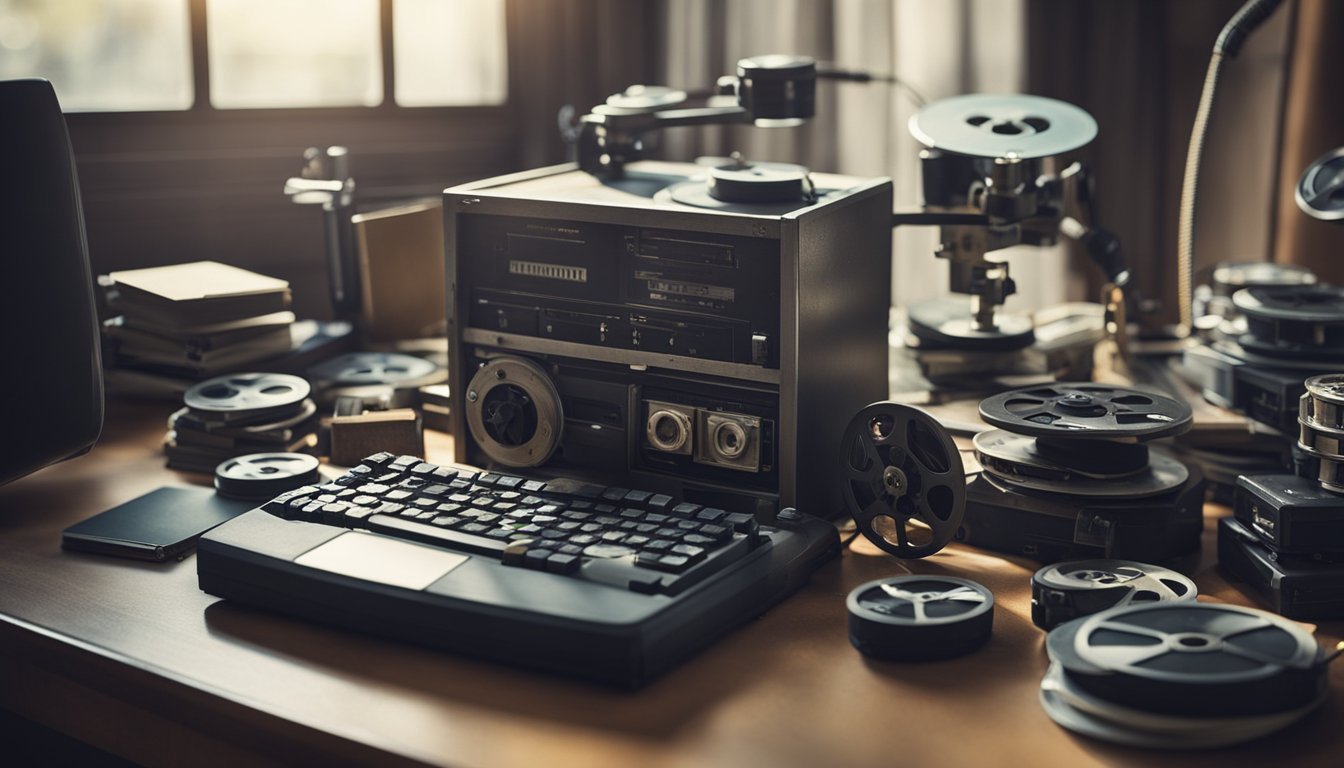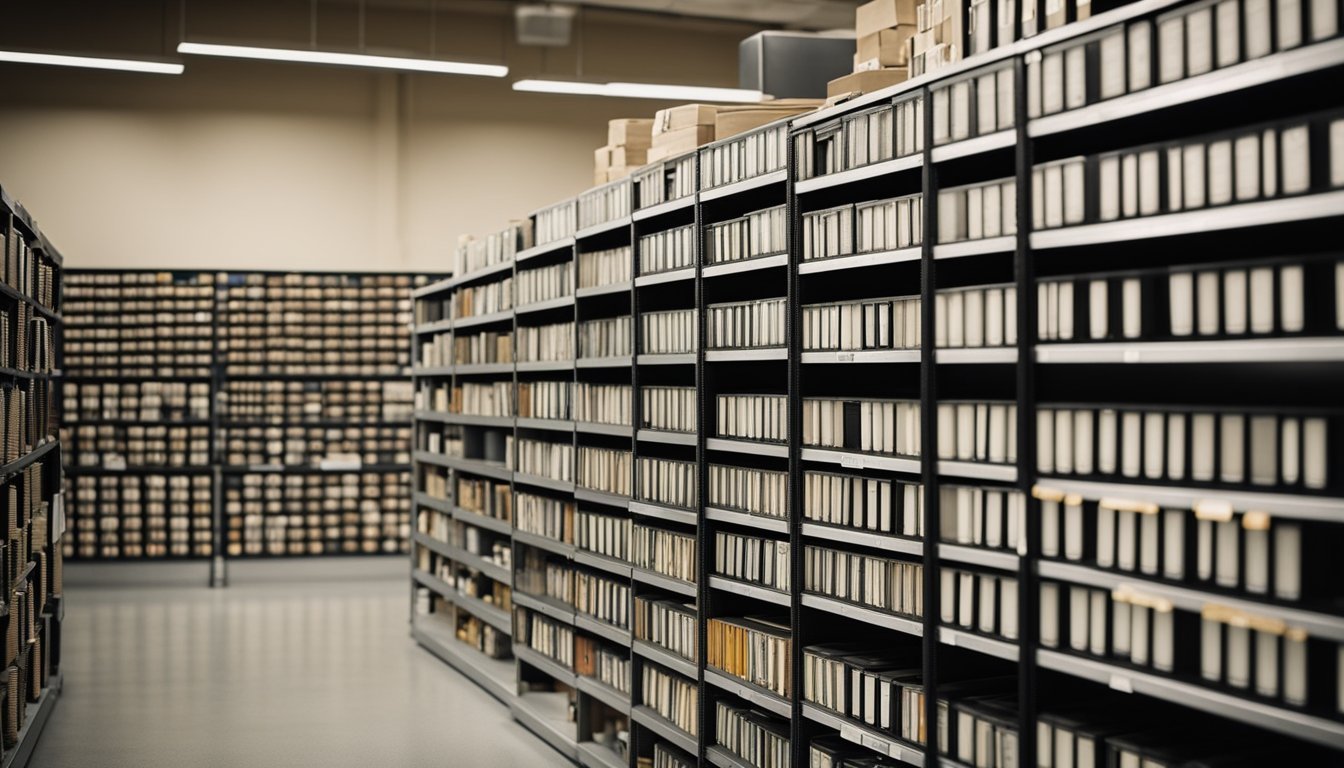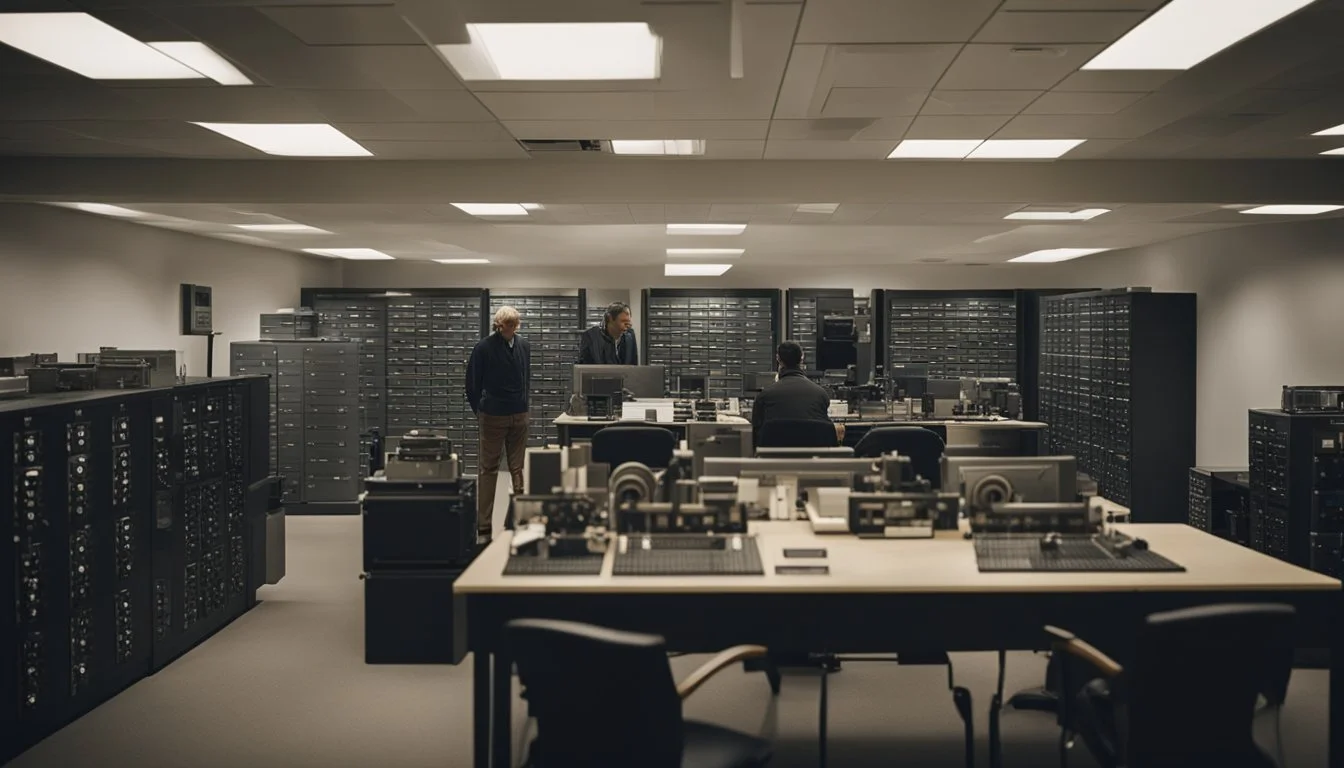Navigating the World of Film Preservation and Restoration
Essential Techniques and Tools
The art of film preservation and restoration is crucial for safeguarding cinematic history. By employing specialized techniques to prevent deterioration, preservationists ensure that movies in formats ranging from celluloid reels to digital files remain intact for future audiences. This meticulous process not only protects the physical film but also allows for public access through copies, DVDs, and digital media.
Organizations like The Film Foundation and the National Film Preservation Foundation play a pivotal role in this endeavor. Through initiatives such as restoration screenings and educational modules, they highlight the importance of maintaining our film heritage. The goal is to ensure that classics and important historical records are available for generations to come.
Moreover, film restoration often involves innovative technological approaches. Advanced methods are used to restore old or damaged films to their original or enhanced quality, providing a viewing experience that remains true to the filmmaker's vision. These efforts underscore the delicate balance between preserving the past and utilizing modern technology to keep it alive.
Film Restoration Processes
Film restoration involves several intricate steps aimed at reviving the integrity of films. These steps ensure that historical films are preserved for future generations by combining traditional and modern techniques.
Assessment and Documentation
Assessment and documentation serve as the foundation of the restoration process. Each film is evaluated for its physical and chemical condition. Technicians identify issues such as scratches, tears, color fading, and vinegar syndrome.
Detailed records are created to log the film’s original aspects, existing defects, and proposed restoration actions. This ensures no loss of historical value. Proper documentation helps in maintaining a track record of all modifications for future references.
Physical Repair and Stabilization
Physical repair and stabilization focus on correcting and preventing further physical damage. Techniques like cleaning, splicing, and de-acidification are employed.
Cleaning removes dirt and debris while splicing repairs torn segments using specialized adhesives or tape. De-acidification addresses chemical deterioration, particularly in older films, to prevent further decay.
These repairs ensure the film's physical medium is stable enough for digitalization and eventual viewing.
Digital Techniques
Digital techniques have revolutionized film restoration by providing tools to enhance the visual and audio quality. Processes such as scanning, color correction, and digital repair are standard.
Scanning converts the physical film into digital files. Advanced software facilitates frame-by-frame correction, addressing scratches, jitter, and color imbalances. Sound restoration often includes noise reduction and synchronization with the visual elements.
Digital techniques ensure long-term preservation and easier access for distribution and viewing.
Preservation Challenges
Navigating the world of film preservation involves complexities such as material degradation, technological obsolescence, and balancing access with conservation. Each of these challenges requires specific strategies to ensure the longevity of cinematic history.
Material Degradation
Film materials, especially nitrate and acetate films, are prone to deterioration over time.
Nitrate film, used until the mid-20th century, is highly flammable and chemically unstable. It deteriorates into a sticky, powdery substance, risking the loss of historical footage.
Acetate film, which replaced nitrate, suffers from "vinegar syndrome," where the film emits acetic acid, causing it to shrink, warp, and become brittle.
To combat these issues, preservationists use climate-controlled storage and digitization techniques to extend the film's life.
Technological Obsolescence
The rapid advancement of technology poses significant challenges for film preservation.
Formats such as VHS, Betamax, and 8mm have become obsolete, making it difficult to find equipment to play or digitize them.
Preservationists also struggle with software obsolescence, where older digital files become unreadable due to the lack of compatible software.
Maintaining access to functional playback devices and continually updating digital archives are necessary strategies to address this problem.
Access vs. Conservation
Balancing public access with the need to conserve fragile materials is a critical challenge.
Frequent handling and exposure to light can accelerate the decay of physical film. Therefore, archives must limit access to original prints to prevent damage.
Digitizing and providing digital viewing options is essential but expensive and time-consuming.
Striking a balance involves creating high-resolution digital copies for public use while preserving the original reels in controlled environments.
Case Studies in Film Restoration
This section highlights key examples of successful and controversial film restorations, offering insights into the challenges and triumphs experienced in the field.
Notable Success Stories
Disney's "Snow White and the Seven Dwarfs" underwent a groundbreaking digital restoration in 1993. Using Kodak's Cineon system, the film was scanned, digitally cleaned, and color corrected. This process preserved the film's original charm while enhancing its visual clarity for modern audiences. The success of this restoration marked a milestone and set a precedent for future digital restorations.
"Metropolis" (1927) also stands out as a significant success story. Restorations of Fritz Lang's classic were conducted over several decades, with the most comprehensive version released in 2010. New footage and enhanced audio were included, extending the film to close to its intended length. This effort underscored the importance and potential of film preservation in recovering lost cinema history.
Controversial Restoration Decisions
"Star Wars" Special Editions, released in the late 1990s, sparked debate among fans and critics. Changes were made to improve visual effects and add scenes, but many argued that these modifications altered George Lucas's original vision. The controversies highlighted tensions between artistic integrity and technological enhancement.
Another contentious case is "Blade Runner". Ridley Scott's sci-fi masterpiece has multiple versions, including the Director's Cut and Final Cut. Some purists believe the original 1982 release is the definitive work, while others appreciate the refinements in later editions. This debate illustrates the complex dilemmas faced in the restoration process, balancing authenticity with modern advancements.
Role of Archives and Institutions
Archives and institutions play a critical role in preserving and restoring films. These entities maintain collections, implement preservation techniques, and make films accessible to the public and researchers.
Public Film Archives
Public film archives are vital for preserving cultural heritage. These organizations, such as the National Film Preservation Foundation, focus on safeguarding films from deterioration. They employ various techniques, including digitization and storage in climate-controlled environments.
These archives often collaborate with governments and educational institutions to secure funding and expertise. They may also provide public access to their collections through screenings, online platforms, and educational programs. Collaboration with historians, filmmakers, and scholars ensures that the preserved films are not only saved but also studied and appreciated.
Private Collections
Private collections contribute significantly to film preservation, often housing rare and unique films. Individual collectors and private institutions sometimes possess films that are not available in public archives. These private entities can offer a level of flexibility and focus not always possible in larger public archives.
Often, private collectors specialize in specific types of films or genres, providing a more detailed preservation approach. Collaborations between private collectors and public archives can enhance the overall preservation efforts, combining resources and expertise. Private collections also sometimes loan their films to public archives or exhibit them at film festivals and retrospectives, thereby increasing public access and awareness.
Future of Film Preservation
Film preservation is at a crossroads where emerging technologies and international collaboration are key to its evolution. These aspects are crucial in ensuring the longevity and accessibility of cinematic heritage for future generations.
Emerging Technologies
Emerging technologies such as artificial intelligence and machine learning are revolutionizing film preservation. AI algorithms can now predict and correct film degradation patterns, improving the quality of restoration. Machine learning aids in color correction and frame repair, tasks that used to be manual and time-consuming.
Digital archives are also gaining prominence. High-resolution scanning and cloud storage allow films to be preserved in digital formats. These digital copies can be easily shared and accessed, enabling a broader reach. Blockchain is being explored for its use in tracking the authenticity of digital archives.
International Collaboration and Standards
International collaboration is essential. Organizations like The Film Foundation and UNESCO are setting global standards for film restoration. They work with many countries, ensuring best practices are implemented everywhere. This standardization helps in maintaining the authenticity and quality of restored films.
Collaborative projects and funds are also increasing. Initiatives like the World Cinema Project help in restoring films from diverse cultures. Such projects ensure that not just Hollywood classics but films from various regions get the attention they deserve. This international effort democratizes film preservation, making it a global responsibility.
Educational Resources and Training
Educational resources in film preservation and restoration span degree programs, specialized workshops, online resources, and active communities. These opportunities offer invaluable knowledge and practical skills to professionals and enthusiasts alike.
Degree Programs and Workshops
George Eastman Museum offers a unique certificate and master’s degree program through the L. Jeffrey Selznick School of Film Preservation. Established in 1996, this program combines academic and hands-on training in archival practices.
Other institutions, such as UCLA, provide comprehensive courses in film preservation. These programs typically cover areas like media archiving, film history, and technical restoration methods.
Workshops are also key. Each year, communities and festivals such as the San Francisco Silent Film Festival arrange workshops and panels discussing the latest techniques and trends in film preservation.
Online Resources and Communities
Online resources provide accessible education and support for film preservationists. The Film Foundation’s Story of Movies curriculum educates middle and high school students on cinema history and preservation, fostering early interest and knowledge.
Digital archives such as the Sprocket Society share valuable resources and information. These platforms offer forums for discussion, detailed guides, and digitized materials for study.
Communities and organizations often host webinars and online courses, allowing for flexible learning. Websites like i4fe maintain updated repositories of research and offer interactive opportunities to connect with professionals worldwide.
Funding and Support
Securing adequate funding and support is crucial for successful film preservation and restoration. Efforts are often bolstered by government grants, nonprofit organizations, private sponsorship, and even crowdfunding campaigns.
Government Grants and Policies
Government grants play a significant role in film preservation. Organizations such as the National Film Preservation Foundation (NFPF) provide financial assistance to nonprofit and public institutions.
The NFPF offers two types of grants: Matching Grants and Basic Preservation Grants. Matching Grants range from $20,001 to $75,000 and require recipients to find outside cash support equal to one-fifth of the total grant amount. Basic Preservation Grants offer awards from $1,000 to $20,000 for laboratory work to preserve significant films.
Government policies also influence the availability and allocation of funds. Policies may mandate the preservation of culturally or historically significant films, encouraging public and private entities to collaborate. The involvement of the U.S. Congress has been pivotal in supporting the NFPF’s mission to save America's film heritage.
Private Sponsorship and Crowdfunding
Private sponsorship and crowdfunding have become increasingly vital in recent years. Organizations like The Film Foundation (TFF) work with industry stakeholders to secure funds for preserving motion picture history. The TFF collaborates with entities such as the Directors Guild of America to raise awareness and funds for film restoration projects.
Crowdfunding platforms offer an alternative route for raising money. Filmmakers and preservationists can launch campaigns to solicit small contributions from a large number of supporters. These campaigns often include incentives for backers, such as exclusive screenings or credits in the restored film. Leveraging both private sponsorship and grassroots funding not only provides financial resources but also engages the public in the preservation process.
Ethical Considerations
Ethical considerations play a crucial role in film preservation and restoration. Balancing the integrity of the original work with modern restoration techniques necessitates meticulous attention.
Responsibilities include maintaining the filmmaker's intent without imposing personal biases.
Transparency in methodologies and decision-making is imperative. Documenting every step of the restoration process ensures accountability and allows future restorers to understand the rationale behind each action.
Use of AI and automated tools can dramatically change a film's composition. Ethical use requires these technologies to adhere strictly to original elements, avoiding unwarranted alterations.
Proper authorization from rights holders is essential before restoration begins. This ensures legal and ethical compliance.
Prioritizing original elements like color grading, sound quality, and historical context helps maintain authenticity. Preservation organizations must resist the temptation to over-improve in ways that could misrepresent the film's era.
Understanding regional and cultural sensitivities is also vital. Certain films may have specific historical or cultural significances that restoration teams must respect.
To summarize, ensuring ethical film restoration involves balancing modern technology with respect for the original material and contexts. Responsible practices safeguard films for future generations while honoring their creators.
Significant Organizations and Key Players
Numerous organizations play a vital role in film preservation and restoration. These entities work tirelessly to protect and restore cinematic history.
National Film Preservation Foundation (NFPF)
The National Film Preservation Foundation (NFPF), established by Congress, aids in the preservation of America's film heritage. It supports nationwide efforts to save films and improve access for study, education, and exhibition.
Sprocket Society
The Sprocket Society focuses on film preservation resources and connects various preservation initiatives. This group collaborates with major archives and institutions to ensure films are preserved and accessible.
The Film Foundation (TFF)
Founded by Martin Scorsese, The Film Foundation (TFF) is dedicated to protecting and restoring films. TFF has sponsored numerous restoration projects and presents world restoration premieres at events like Cannes Classics.
SFSFF Preservation Fund
The SFSFF Preservation Fund, part of the San Francisco Silent Film Festival, funds the preservation of silent films globally. They maintain a collection of 35mm prints at the Library of Congress.
British Film Institute (BFI)
The British Film Institute (BFI) is central to preserving British cinema. BFI National Archive holds one of the world’s largest film collections and conducts restorative work on significant British films.
These organizations play an indispensable part in safeguarding cinematic history for future generations. Their combined efforts ensure that classic and culturally significant films remain intact and accessible.







